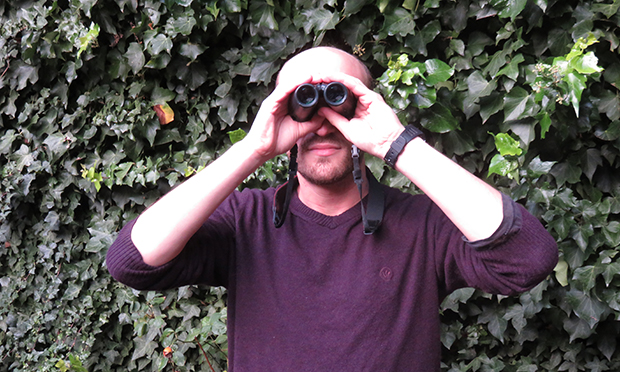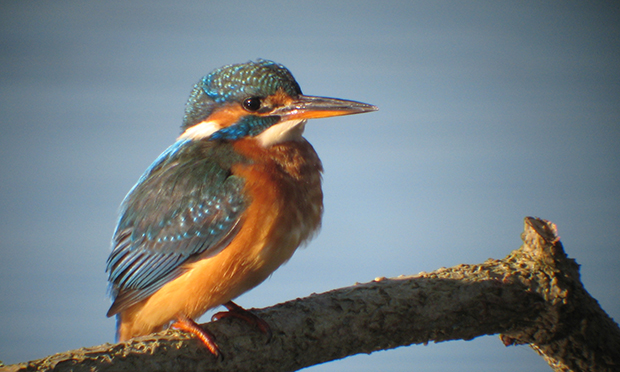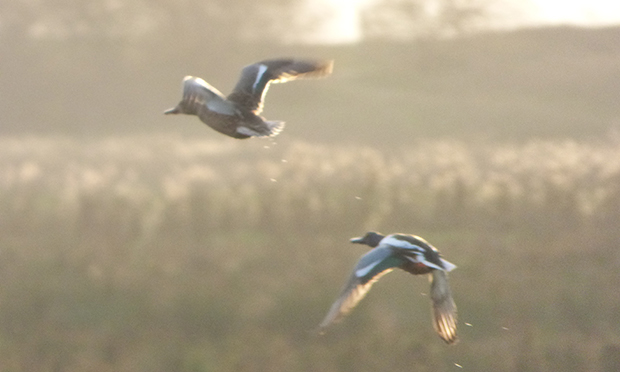
Look for birds in East London and you might spot pigeons and call it quits. But look properly, really notice what’s around you, and it’s thrilling what you can see: kingfishers, woodpeckers, peregrines, owls – and that’s before you even get to the particularly rare stuff.
London is a migration route filled with tributaries flowing into Mother Thames. There are valleys and heaths and ancient woodland. Seen from the sky our city is remarkably green. Conceiving of it like a bird might, and swotting up on plumage, has opened my eyes to new ways of experiencing these metropolitan environs.
Birds were a childhood love but I stopped noticing them as I got older owing to preoccupations with trivial things and the perceived uncoolness of ‘twitching’. Now the obsession has gripped me anew and I’m filled with childlike wonder at the richness of it all. What’s more, I’ve discovered I am far from alone.
Birdwatchers, birders, twitchers, ornithologists, avian enthusiasts – call us what you like – are viewed as eccentric bores by those ignorant of such joys. Trudging around with binoculars or a telescope and ticking off species on a list is not everyone’s idea of fun, but casual enjoyment of the natural world has huge, unappreciated benefits for mind, body and spirit.
As with all things, there are different subspecies of birdwatcher, but you don’t need to consider yourself one at all to appreciate that the sight of a hawk or the song of a whistling warbler can make memorable what would otherwise be another tedious commute or humdrum office lunch break.
“I did the London commute for quite a while,” recalls Howard Vaughan of the East London Birders Forum. “On my lunch breaks I wandered the streets and went into tiny little green spaces and found urban nesting sparrowhawks, a nuthatch, firecrests.”
A committed birdwatcher since the age of five, he now works at Rainham Marshes on London’s easternmost fringe. It’s a miraculous place where lapwing flocks float above reedbeds and acrobatic falcons hunt dragonflies in summertime.
Seals and porpoises pop up in the Thames, which flows past the reserve, and there are snakes, stoats and other creatures here too. Skyscrapers are visible in the distance and you can hear the groan of traffic from a nearby arterial road, but it’s hard to believe this is still London.

“I’m from Ilford,” says Vaughan. “My mum is a Plaistow, East Ham lady, so I have the East End in my blood. When I first started birding in East London 30-odd years ago, Rainham Marshes [then a military firing range] wasn’t really an option. I used to go to the urban and suburban parks.
“I’d go birding in Wanstead Park and Wanstead Flats, up and down the Lea Valley. There are birds everywhere – that’s the bottom line.”
Gary Budden, a writer and editor at East London publishers Influx Press, also caught the bug young from his father, a working class, self-taught amateur ornithologist. Like many birdwatchers, the pair went on trips to obscure parts of the UK in pursuit of glimpses of sought-after species.
“We went all around the country doing birdwatchery stuff,” he says. “That probably instilled in me all the knowledge and gave me the passion for it. Then, when I got into my late twenties, it all just came flooding back.”
Now 33, he agrees that birdwatching tends to appeal either to children or to retired men, acknowledging: “It has had an image problem – it still has one to an extent.”
Budden’s own writing has been heavily influenced by The Peregrine, a niche work of literature by J.A. Baker, an Essex writer who was perhaps the ultimate obsessive birdwatcher.
He says there has been a renewed interest in writing about nature and the British landscape and that public appetite for the “authentic experience” that birdwatching offers is growing.
“I think people are bored, in a strange way,” Budden says. “When you go out looking for birds, you get something that counts as an authentic experience – an experience you can’t buy.
“You have to go to specific places to see specific types of birds. You can’t get that in any way other than by physically going to that place and engaging with it and knowing what you’re looking for. I think that’s part of the appeal.
“This is something that is completely outside of the human world, and it has site-specific aspects to it.”
In an age when our eyes are increasingly focused downward at the tiny glaring screens of our devices, in a country that has lost most of its large wildlife, birds remain dramatic symbols of freedom, beauty and purity.
“There is this statistic that British birds are the most watched in the world,” says Budden. “That is a curious but also rather unsurprising fact.”

Is birdwatching undergoing a renaissance locally? There are signs it might be. Witness the plethora of blogs and Twitter accounts authored by youngish Hackney and Walthamstow types rhapsodising about the avian fauna of adjacent marshlands. People like Graham Howie, 37, a primary school teacher from Dalston who “started noticing” birds three years ago.
“I was training for the Edinburgh Marathon in 2012 and I used to use the Lea Valley,” he says. “I’d run alongside the canal. I used to run up and down there and see all these birds that I’d seen before but had not taken much notice of – birds like kestrels and cormorants – and I started to stop and have a look at them. The next week I took a camera and took pictures, and when I got back home I identified them. I kept doing that for a while. I saw more birds and I got heavily into it.
“Then I got to know the local birdwatching community. I met other people who were as odd as I was and got to know them and learned from them. They showed me other places I might not have known about otherwise.”
With revamped bird reserves now being created in Stoke Newington and on the edge of Walthamstow, how long before this pursuit starts being marketed as hip, perhaps with the assistance of that newly fashionable retro font that adorns so many pricy cafes?
I’m not sure I want it to be, but it would be no bad thing if birds were to become, for everyone, more than what J.A. Baker called “a tremor on the edge of vision”.
rspb.org.uk

widgen?